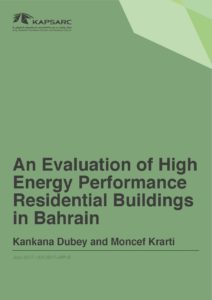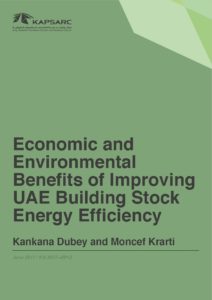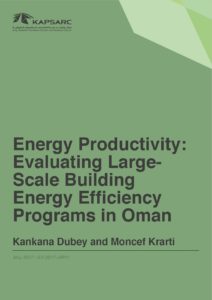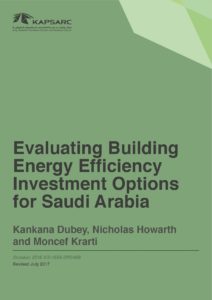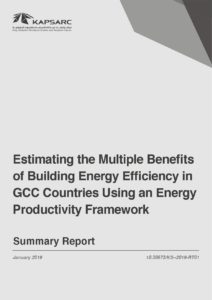This report quantifies the direct and key indirect benefits of energy efficiency investment in buildings in Gulf Cooperation Council (GCC) countries. It summarizes the key insights from individual country studies conducted as part of KAPSARC’s energy productivity project. This analysis indicates that a strong case can be made for public energy efficiency programs that would encourage building owners to invest in the socially optimal amount of energy efficiency:
Driven by population growth, rapid development and low domestic energy prices, energy consumption from buildings across the GCC has risen by over 200% on average since 2000 in both absolute and per capita terms, posing sustainability concerns.
Even with the GCC’s relatively low electricity prices, the most basic energy efficiency investment options such as programmable thermostats, LED lighting and stopping air leakage have payback periods of less than five years for the consumer.
Some energy efficiency retrofits, including more efficient air-conditioners and replacing windows and insulation, have longer paybacks periods.
The investment case for increasingly ambitious energy efficiency actions becomes more compelling once the broader system benefits are included, such as reducing the need for new electricity generation capacity, avoided carbon emissions and creating new jobs and investment.
A deep energy efficiency retrofit has a payback period for investors of between 11 and 70 years, depending on electricity prices; by incorporating the wider system benefits, this payback period improves to between 7 and 23 years on average across the GCC.
This analysis provides a strong case for public energy efficiency programs, without which building owners are unlikely to invest in the socially optimal amount of energy efficiency.
14th January 2019
